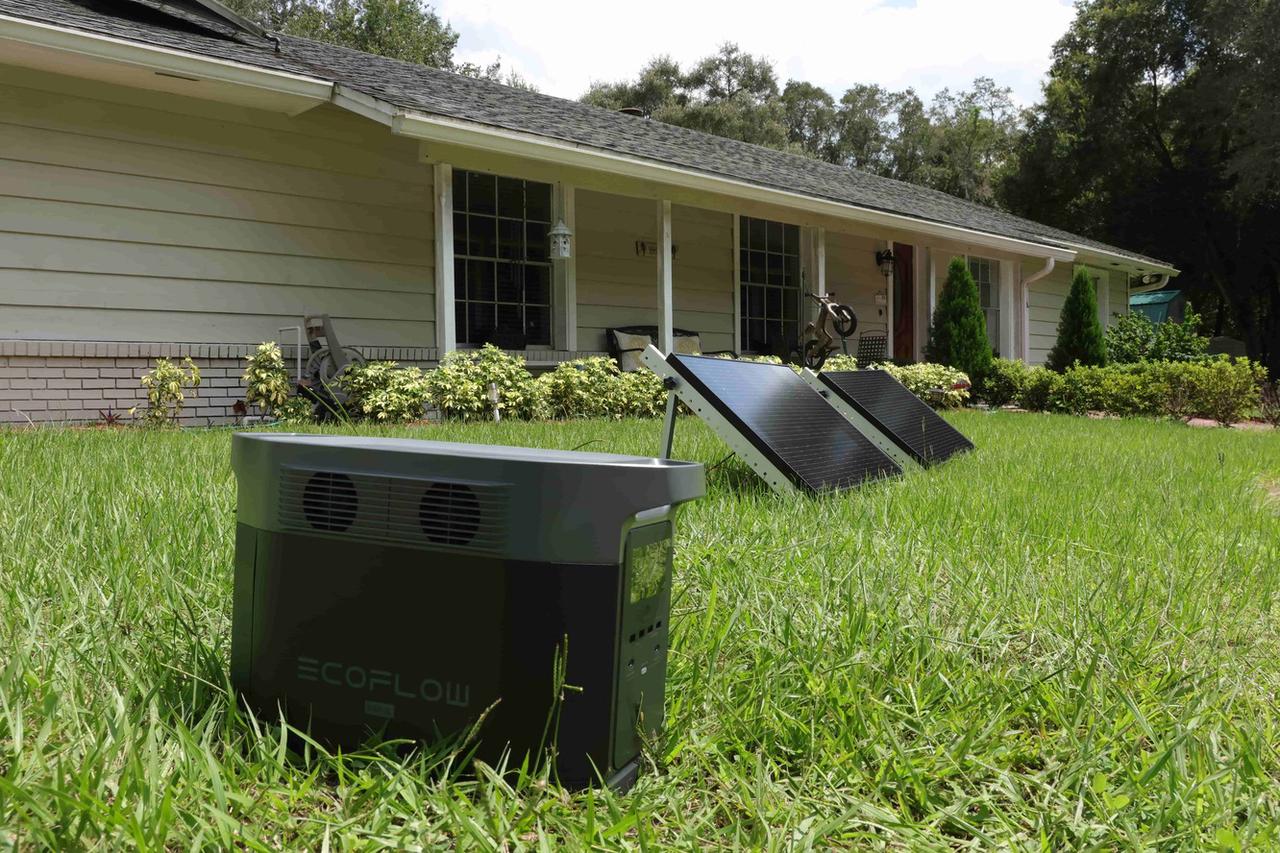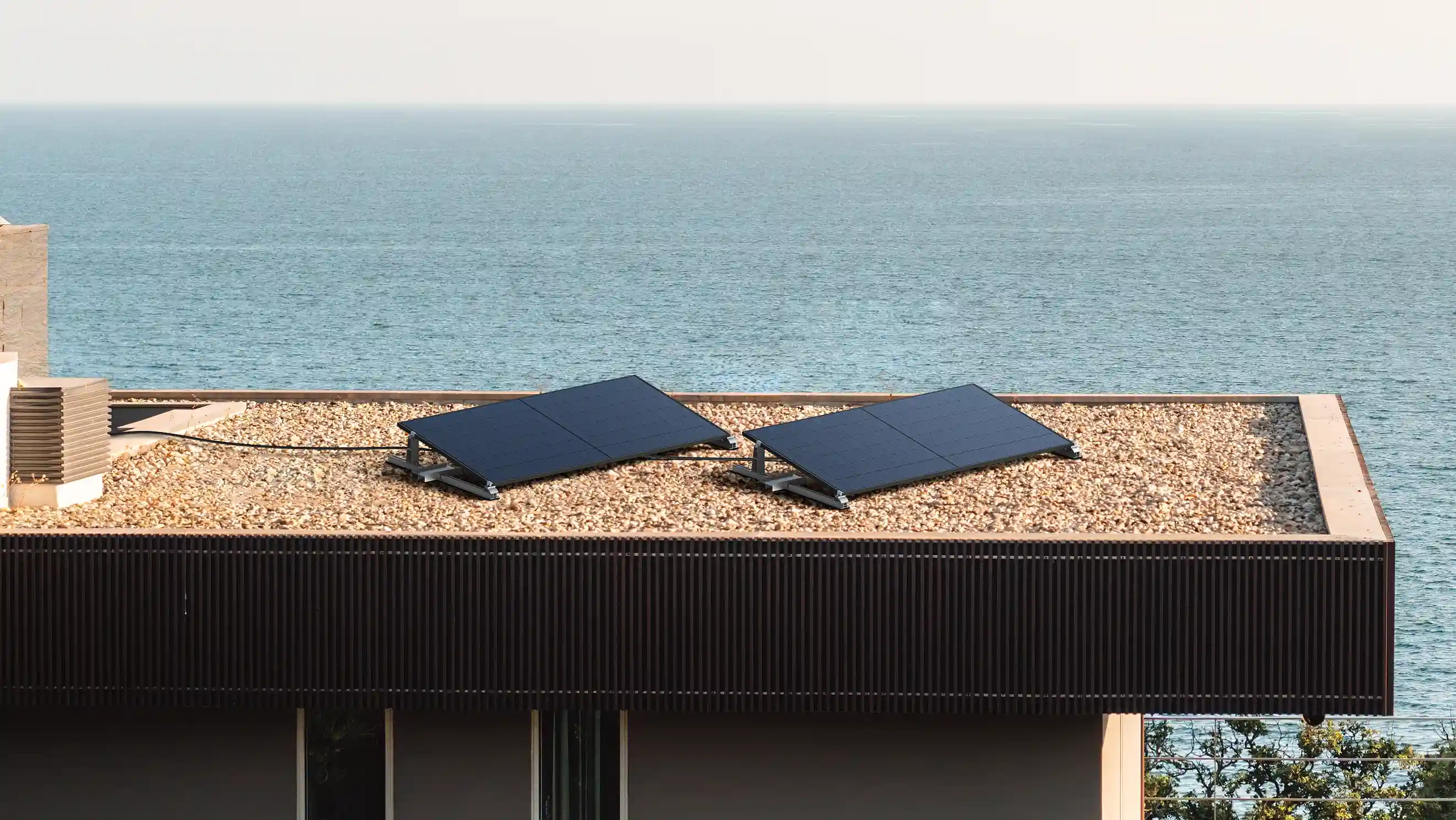- Why Portable Solar Panels Work Well for Small and Mid-Sized Farms
- What to Power on Your Farm Using Portable Solar Panels
- How the EcoFlow 220W Bifacial Portable Solar Panel Solves Key Power Problems
- Is a Solar Panel Farm Setup Right for You?
- What to Know Before Setting Up a Solar Panel Farm System
- What Do Trends Say About Portable Solar Panels for Farms?
- How Portable Solar Panels Compare to Fixed Solar Installations
- Common Mistakes Farmers Make with Solar Panel Systems
- How to Maximize Energy Output from Your Solar Panel Farm
- Powering Your Farm with Portable Solar Panels
- 5 FAQs: Portable Solar Panels for Farms
Portable Solar Panels to Fuel Your Farm: How to Power Agriculture the Smart Way
- Why Portable Solar Panels Work Well for Small and Mid-Sized Farms
- What to Power on Your Farm Using Portable Solar Panels
- How the EcoFlow 220W Bifacial Portable Solar Panel Solves Key Power Problems
- Is a Solar Panel Farm Setup Right for You?
- What to Know Before Setting Up a Solar Panel Farm System
- What Do Trends Say About Portable Solar Panels for Farms?
- How Portable Solar Panels Compare to Fixed Solar Installations
- Common Mistakes Farmers Make with Solar Panel Systems
- How to Maximize Energy Output from Your Solar Panel Farm
- Powering Your Farm with Portable Solar Panels
- 5 FAQs: Portable Solar Panels for Farms
Power is needed on every farm, regardless of size. From keeping irrigation systems operating to energizing electric fences and powering tools in the field, a source of electricity can be a huge time and labor saver. For most farm owners, particularly those managing small to medium-sized farms, grid extension or gas generators are too expensive or impractical. Portable solar panels are now a viable and clean solution. They offer flexibility, save on fuel expenses, and enable you to take power to any corner of your property.
Why Portable Solar Panels Work Well for Small and Mid-Sized Farms
Most farms do not have electricity in all locations. It is costly and time-consuming to run cables over long distances. This is where portable solar panels come in handy. They can be relocated where electricity is required, e.g., the chicken house, a far-off gate, or a temporary building.
A portable solar panel can accompany you through the seasonal chores. In the spring, it can power seed-starting lights. During the summer, it can be used to charge batteries for irrigation timers. In the autumn, it could provide power for pest deterrent systems along the border of a crop field. These panels are built to move, to deploy easily, and to start producing electricity in full sun.
What to Power on Your Farm Using Portable Solar Panels
Portable solar panels can run more devices than you might expect. With a properly sized panel and storage setup, farmers often use them for:
- Electric fences to protect livestock from predators
- Low-wattage water pumps for garden beds or stock tanks
- Lighting systems in tool sheds, greenhouses, or mobile chicken coops
- Surveillance or climate sensors in outbuildings and open pastures
- Recharging cordless tools used in fencing, pruning, or harvest work
These tools don’t consume much electricity. Even panels under 300 watts can support them throughout the day, especially when paired with a portable power station to store surplus energy for nighttime or cloudy conditions.
How the EcoFlow 220W Bifacial Portable Solar Panel Solves Key Power Problems
The EcoFlow 220W Bifacial Portable Solar Panel is built for real-world farm work. It’s compact, rugged, and highly efficient. One standout feature is its bifacial design, which collects energy from both the front and the back. This allows it to harness reflected sunlight from the ground, which is especially useful in open fields or gravel paths.
Its IP68 waterproof rating protects it from rain, dust, and debris—common conditions on any working farm. The panel folds up easily and weighs just over 20 pounds, making it easy to carry to remote parts of your property. With a 23% energy conversion rate, it provides reliable output through long workdays. Paired with a portable power station, it offers silent, emission-free energy wherever you need it.
Is a Solar Panel Farm Setup Right for You?
If you’re unsure whether portable solar is right for your land, think about your current energy needs. Do you have tasks that take place far from your main power source? Are you working in areas with consistent sunlight? Would a mobile energy system reduce your reliance on gas or long extension cords?
Farmers in the Midwest, Mountain West, and Southern states often benefit the most due to long hours of sun and large property layouts. Portable panels don’t need permits or special installation. You can test them on a single job, such as running an irrigation timer, and then expand from there.


What to Know Before Setting Up a Solar Panel Farm System
Planning ahead makes solar work smoother. First, pick a spot with full sunlight and little to no shading throughout the day. In most U.S. regions, a tilt angle between 30 and 40 degrees works well. Panels should be kept off the ground using adjustable stands, and cables must be weatherproof and routed away from traffic paths or animals.
If you need energy after sundown, pair the panel with a compatible solar battery or power station. Seasonal shifts affect performance, expect more generation in summer and less in winter. Wipe the panels clean every few weeks to maintain high output, especially during dusty or muddy seasons.
What Do Trends Say About Portable Solar Panels for Farms?
Portable solar energy is gaining traction with American farmers. More than one-third of U.S. Solar power capacity is small-scale solar in 2023, farms are using solar power, and nearly half of those started with portable panels. These systems appeal to owners of smaller plots or diversified farms, where flexibility matters more than maximum wattage.
States like California, Texas, and Iowa offer local rebates or tax credits for renewable equipment. Farm users are also seeking ways to reduce reliance on fossil fuels and shield themselves from rising energy prices. As equipment costs fall and performance improves, more farms are using solar as a main power source, not just a backup.
How Portable Solar Panels Compare to Fixed Solar Installations
Portable panels and fixed arrays serve different needs. Fixed systems are better for large-scale power use, like running entire buildings or cold storage units. But they’re costly, require installation, and stay in one location.
Feature | Portable Solar Panels | Fixed Solar Systems |
Cost | Lower upfront cost | Higher initial investment |
Setup Time | Quick, no permits needed | Requires professional installation |
Flexibility | Easy to move between tasks or locations | Static—best for permanent sites |
Best Use Case | Remote tools, temporary stations | Whole-farm or home power |
If your seasonal workload shifts or you rotate use areas across your land, a mobile setup gives you far more control without the need for complex changes.
Common Mistakes Farmers Make with Solar Panel Systems
Some mistakes are easy to avoid. One is placing the panel where it’s shaded part of the day. Another is assuming that one panel will power large machines or entire barns. Solar is scalable, but it helps to match the panel to the job.
Other errors include leaving panels dirty, storing cables incorrectly, or skipping a battery backup when needed. It’s also important to track seasonal changes. Power output in July may look very different from December. If your expectations are based on real output potential, your experience will be more consistent.
How to Maximize Energy Output from Your Solar Panel Farm
To get the best results, start with location. White gravel or other reflective surfaces below the panel help bounce sunlight onto the back side. This can improve output if you’re using a bifacial modular solar panel. Adjust the tilt throughout the year to follow the sun’s arc, some stands allow easy repositioning.
Clean the surface weekly if you live in a dry or dusty climate. Place the panel early in the morning so it can begin charging right at sunrise. Avoid growing crops nearby that may shade it by midsummer. These small steps can lead to a stronger return on your solar investment.


Powering Your Farm with Portable Solar Panels
Farms need power that’s mobile, quiet, and built for outdoor conditions. The EcoFlow 220W meets all of these needs while giving farm owners freedom from fuel and wires. Whether you’re watering livestock, running an electric fence, or charging tools, this panel brings power where you need it most. Portable solar is now one of the most practical energy choices for farms that value mobility and control.
5 FAQs: Portable Solar Panels for Farms
Q1. Can portable solar panels operate heavy-duty farm equipment such as tractors or grain dryers?
No, the majority of portable solar panels, even high-efficiency ones, are not suited for powering high-wattage equipment like large machinery. Equipment such as tractors or grain dryers requires several kilowatts of continuous power, which cannot be delivered by portable panels. Portable panels are well-suited for devices and tools below 500W, such as pumps, electric fences, and battery chargers. For equipment with high power requirements, grid ties or large fixed solar systems are more suitable. Portable panels provide the missing link in smaller, portable energy requirements.
Q2. How long do portable solar panels normally last on a farm?
With good care, a good portable solar panel will survive 10–15 years even in outdoor and agricultural use. Dust, mud, animal movement, and weather extremes will shorten the lifespan, so try to clean panels periodically and store them when they're not being used. Those with tempered glass and waterproof ratings such as IP67 or IP68 are more suitable for rough use. Ongoing maintenance will help to maintain energy output over the years.
Q3. Can I use portable solar panels to power a well pump?
Yes, if the wattage and startup current of the pump are compatible with the panel and storage system. Most shallow well pumps for animal troughs or garden irrigation require 200–600 watts. If your pump is within that range, a portable solar panel and a compatible solar generator can be a good combination. Deeper or larger pumps might require a fixed array or dedicated solar water pump system with storage batteries.
Q4. Are there any tax incentives for utilizing portable solar on a farm?
In most U.S. states, renewable energy utilized for farming activities is eligible for rebates, tax credits, or equipment write-offs. The federal solar tax credit (ITC) may be applicable to some off-grid systems if combined with storage. Local initiatives can also offer funding or technical support for the adoption of renewable energy in rural areas. Farmers can inquire about available incentives from local agricultural extension offices or the USDA REAP program.
Q5. How should portable solar panels be stored when they are not being used?
For safe storage of panels, fold them along preset hinges and put them in a dry, clean container or bag. Try not to stack heavy objects on top. For long-term storage, keep them indoors in a controlled temperature environment. Prevent long-term exposure to UV rays when not in power generation, as it can impact plastic or wiring eventually. Proper storage of the panel increases its lifespan and keeps it prepared for seasonal use.